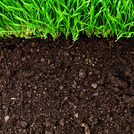
This resource contains three lab activities on topic of general soil science.
- Subject:
- Agriculture
- Biology
- Ecology
- Environmental Studies
- Forestry and Agriculture
- Material Type:
- Activity/Lab
- Author:
- Marko Davinic
- Date Added:
- 05/11/2020

This resource contains three lab activities on topic of general soil science.
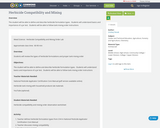
The student will be able to define and describe herbicide formulation types. Students will understand basics and importance of a jar test. Students will be able to follow tank mixing order instructions

The educational material consists of an introduction to the pesticide problematic together with five themes that illustrate different aspects of the problematic. Below you find video-clips from Bolivia that visualizes and concretizes the theme described in the fact sheet (downloadable PDF), including study questions that encourage the students to reflect upon the theme presented in the educative videos as well as in the fact sheet. Furthermore each fact sheet contains a reference list1 and grey boxes in the text with suggestions for further reading on the themes.
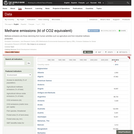
List of countries with their annual methane emissions. The data are from 2005. The data are given in total annual emissions, thus must be compared with economic activity, geographic and most importantly, population data to be relevant.

Nassella seeds germinated in water to observe germination process. Photo credit: Fernando Agudelo-Silva
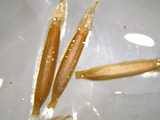
Nassella seeds germinated in water.Image credit: Fernando Agudelo-Silva
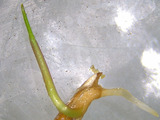
Nassella seeds germinated in water.Image credit: Fernando Agudelo-Silva
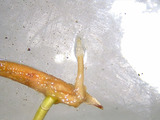
Nassella seeds germinated in water.Image credit: Fernando Agudelo-Silva
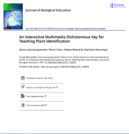
Le site constitue un outil dynamique de détermination des végétaux en ligne, basé sur la manipulation de photos, schémas, glossaire interactif et clés dichotomiques. Le site est accessible à l’adresse: www.biologievegetale.be.
La plate-forme, initialement conçue pour faciliter l’apprentissage des étudiants, constitue également un outil pour le gestionnaire de sites ou le naturaliste. Elle permet d’identifier une espèce végétale à l’aide de clés dichotomiques interactives. Connaître les espèces rencontrées s’avère être la base indispensable pour toute tâche d’évaluation de la structure ou de la qualité d’une végétation. La plate-forme comporte (i) des exercices permettant de s’exercer à la détermination des végétaux. Des liens hypertextes expliquent et illustrent les termes de vocabulaire particuliers. (ii) Une flore en ligne comprenant de nombreuses fiches espèces (descriptions et illustrations), dont par exemple l’ensemble des arbres et arbustes indigènes ou plantés. (iii) Une auto-évaluation des connaissances avec exercices et quizz.
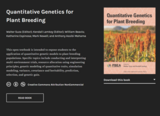
This open textbook is intended to expose students to the application of quantitative genetic models to plant breeding populations. Specific topics include conducting and interpreting multi-environment trials, resource allocation using engineering principles, genetic modeling of quantitative traits, simulation modeling, variance, covariance and heritability, prediction, selection, and genetic gain.
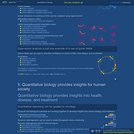
We use eigenvector-eigenvalue analysis to walk through a simple quasispecies model described in Bull, Meyers, and Lachmann, "Quasispecies made simple," PLoS Comp Biol, 1(6):e61 (2005). The dominance of a genotype depends, not merely on its ability to breed quickly (i.e. the rudimentary concept of survival of the fittest), but also on its ability to breed "true."
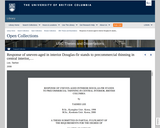
Proper management of uneven-aged interior Douglas-fir (Pseudotsuga menziesii var. glauca) stands is important for British Columbia’s central and southern interior. These stands constitute one of main components of the operable forest land in these areas, with easy access from main roads and towns. This study focused on the growth of uneven-aged Douglas-fir stands after pre-commercial thinning (spacing), with an impetus to improve upon current management practices. Data were collected from 24 permanent sample plots which were established near Williams Lake, British Columbia in 1989; thinning took place between 1990 and 1991. Three measurements have been made post-treatment: 1993, 1997 and 2004. The plot data were used to analyze different growth responses among three different spacing regimes (standard, 3 m clumped and 5 m clumped spacing) and a control. Analyses were performed at both the stand and tree level. The growth of basal area per ha, quadratic mean dbh, volume per ha and Lorey’s height were used for stand level analyses. At the tree level, dbh, height, basal area and volume were the variables of interest. At the stand level, mortality increased (7.1 to 107.1 stems/ha) and ingrowth decreased (2.4 to 8.6 stems/ha) for the second growth period (1997-2003), compared to the first growth period (5.8 to 107.1 stems/ha and 5.0 to 12.4 stems/ha, respectively). No significant differences in annual growth of quadratic mean dbh, basal area and volume per ha and Lorey’s height were noted between the different spacing regimes and the control. At the individual tree level, the 5 m clumped spacing regime usually had the highest dbh, basal area and volume growth for both growth periods. The one exception was for height growth, when analyzed using mixed-effects modeling, where no significant differences were found. Trees on the other two spacing regimes also had higher growth in dbh, basal area, and volume than trees on the control plots. The positive growth response to the spacing treatments at the single tree level was obtained without a reduction in growth at the stand level. This growth increase will result in the residual trees reaching larger sizes more quickly than they would have with no treatment, leading to improved mule deer winter range habitat and higher timber values.
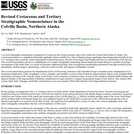
Cretaceous and Tertiary strata exposed in northern Alaska record clastic sediment deposition within a foreland basin adjacent to the ancestral Brooks Range, and form part of an important petroleum play. The goal of this U.S. Geological Survey report is to synthesize the complex stratigraphy of this area into a more simplified scheme. It discusses the regional geology of northern Alaska and the stratigraphy of the Colville Basin in detail. Maps, cross sections, correlation charts, and numerous outcrop photos with detailed captions accompany the text.
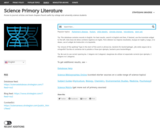
A database of and access to journal articles and book chapters found useful by college and university science students; built from student work at Grinnell College, Grinnell, IA, USA. Used in science courses (especially Biology and Psychology courses) at Grinnell College.
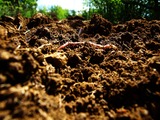
This resource contains three sets of lecture notes on soil health related topics:1) Soil Inorganic Properties and Soil Microbiology 2) Soil Fungi, Algae and Cyanobacteria3) Links Between Soil Health and Plant/Animal Health

Soil and Water Conservation: An Annotated Bibliography highlights freely-available online resources covering various aspects of soil and water conservation, and is designed to be a resource for conservation students and practitioners. The thirteen chapters in the annotated bibliography are grouped into four sections, including History and Fundamentals, Conservation Practices, Conservation Implementation, and Careers. Types of cited resources include extension bulletins, USDA NRCS conservation practice standards, and other government reports and resources. Cited resources are generally concise, easily read, and meant for general audiences. Annotations and images are used to provide context for each resource. Many contributors made Soil and Water Conservation: An Annotated Bibliography possible through their assistance with technical edits, outline development, identifying resources, or writing annotations. Chapter authors are experts and practitioners of soil and water conservation, or students of soil and water conservation who worked under the supervision of the editor, Colby Moorberg. The annotated bibliography is used as the primary text for Kansas State University’s AGRON 635 – Soil and Water Conservation, which is taught by Moorberg.
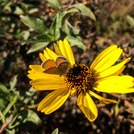
This lab manual was created for LNT 100: Plant and Horticulture Science at Southwestern College in Chula Vista, CA by Professor of Horticulture and Design, Holly McMullen.
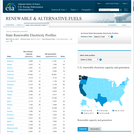
This profile provides maps, charts, and tables pertaining to state capacity and generation of renewable electricity. Tables include data for total net summer capacity and total net generation with rankings for each category. Users can view this data alphabetically by state, by capacity, or by generation. An interactive map allows users to navigate to specific state profiles and view the top 10 renewable capacity states simultaneously.
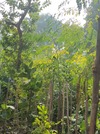
Created for environment sustainability.
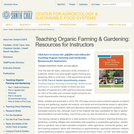
Published by the UC Santa Cruz Center for Agroecology and Sustainable Food Systems, the 600-page manual covers practical aspects of organic farming and gardening, applied soil science, and social and environmental issues in agriculture. Units contain lecture outlines for instructors and detailed lecture outlines for students, field and laboratory demonstrations, assessment questions, and annotated resource lists. Although much of the material has been developed for field or garden demonstrations and skill building, most of the units can also be tailored to a classroom setting.The training manual is designed for a wide audience of those involved in teaching farming and gardening, including colleges and universities with programs in sustainable agriculture, student farms or gardens, and on-farm education programs; urban agriculture, community garden, and farm training programs; farms with internships or apprenticeships; agriculture extension stations; school gardening programs; organizations such as the Peace Corps, US AID, and other groups that provide international training in food growing and ecological growing methods; and master gardener programs.